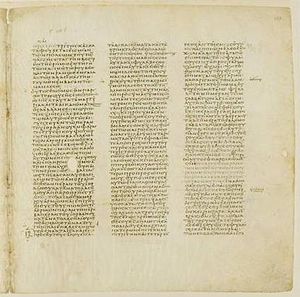The Ten Commandments Scroll, 30-1 BCE
Deuteronomy 8-5-10; 5-1-6-1
4Q41
Language- Hebrew
Discovered- Cave 4, 1952
This text of the Ten Commandments is longer than traditional translations and reflects both biblical versions of the Sabbath commandment (Exodus 20-11 and Deuteronomy 5-11).
This scroll is the best preserved of all the Deuteronomy manuscripts discovered at Qumran. This text may have been used in prayer and is not necessarily a copy of the entire biblical book of Deuteronomy.
Until the discovery of the Ten Commandments Scroll, the Nash Papyrus (2nd century CE) held the title of the oldest version of the Ten Commandments. The order the commandments listed in the Nash papyrus differs from that of the Hebrew Bible and Septuagint. The Nash Papyrus also contains the Shema prayer and is thought to have been used for daily prayer.

Codex Vaticanus
The earliest extant Christian version of the Ten Commandments is in the Codex Vaticanus. The Codex Vaticanus is one of the oldest versions (4th century CE) of the Greek Bible, containing an almost complete copy of the Septuagint (a Jewish translation of the Bible into Greek).
See also-
What do you want to know?
Ask our AI widget and get answers from this website
